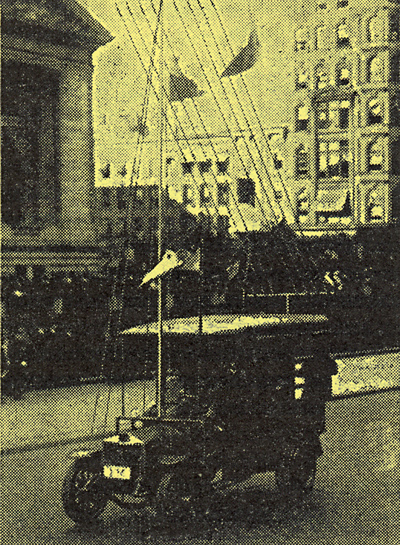|
During the war our activities were severely circumscribed by what we called 'the heavy hand of censorship' and, in particular, we were prevented from writing anything about the rapidly increasing use of valves for war purposes. In fact, the only 'safe' technical news was that coming from neutral America. David Sarnoff, then in Marconi's WT Co. of America, and later to become President of the Radio Corporation of America, was for a time our New York correspondent.
Without any doubt, the most important news coming from the USA concerned the development of the triode: in particular 'the simultaneous use of a single bulb as rectifier, amplifier and oscillator has already produced startling results'. That may raise a smile nowadays but, at the time, it was difficult to believe that anything more sensitive and selective than a good single-valve regenerative receiver would ever be devised. The importance of heterodyne reception was fully realised, thus giving continuous wave systems a new lease of life.
Towards the end of the war there was some relaxation by the censor and theoretical articles on valves were printed. Among the authors of these were two distinguished founder-members of Phase II of wireless technology: Dr R L Smith-Rose and E V (later Sir Edward) Appleton. Smith-Rose wrote along series of articles, starting with elementary thermionics, while Appleton's contribution gave our first mathematical treatment of valve characteristics. Valve manufacture was advancing rapidly and as early as 1916 transatlantic wireless telephone tests were made, using 300 receiving-type valves in parallel in the transmitter.
In the early days most wireless stations were designed empirically but by 1917 it was thought possible to design a complete station of specified performance by applying accepted formula: to 'fly em straight off the drawing board', as they say in aviation circles. A theoretical exercise of this kind was now offered to readers in a series of articles.
The end of the spark transmitter era was now drawing nearer, thanks to improvements in continuous-wave gear and still more to heterodyne valve reception. The last of the great spark stations were those built for spanning the Pacific in two hops; from San Francisco to Honolulu (2,100 miles) and from Honolulu to Funabashi, Japan (3,350 miles).
British amateur activities had been entirely suspended since the outbreak of war but in the USA the movement steadily gained strength until America's entry into the war in 1917; by that time the supply of amateur equipment had become big business.
Television; a contributors prophesy that went wrong: 'The idea of wireless television is...absurdly improbable. ...To construct wireless apparatus capable of receiving 40,000 signals in one-tenth of a second and arranging them in their correct order (would be beyond) the limit of human ingenuity'.

Police wireless car in New York (1918)
|